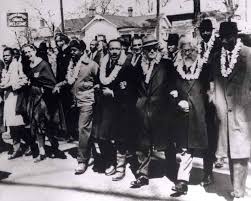2 Elul
The great legal code compiled by the Sephardi Rabbi Joseph Caro, and called the Shulchan Aruch (“The prepared table), was published in Venice in 1555 on the 2nd day of Elul. Along with the commentary by Moses Isserles, which builds on the Sephardi rulings and adds the Ashkenazi traditions – and which he called the Mappah – the table cloth – it is the go-to code of choice for anyone wanting to decide what the ritual and legal requirements might be for their issue, and is core learning for those who wish to have orthodox semicha.
Structured in four main sections following the pattern of the earlier Code of Law the Tur (Arba Turim of Jacob ben Asher) and the Beit Yosef, (Caro’s earlier and much more detailed work commenting on the rulings of the Tur): there is Orach Chaim– the laws of prayer and synagogue custom for daily,, Sabbath, and holiday times; Yoreh Deah – Laws about kashrut; family purity, relations with non-Jews; vows; Israel; conversion, death and mourning, offerings etc. Even Ha-Ezer– Laws addressing marriage, procreation and divorce; and Hoshen Mishpat– Laws for courts of justice; loans and claims; agents; finance; acquisition, purchases and gifts; legacies and inheritance; lost and found property; theft, robbery, damages.. The Shulchan Aruch was designed to provide and exhaustive but relatively easy guide for those without deep knowledge of Jewish law. Caro himself saw it as an entry point into halachah rather than embodying the final conclusive rulings of Halacha. In his introduction it is clear that for him the main text is to be the Beit Yosef, with its citations, its legal arguments, its logical threads. The Shulchan Aruch was for young students not yet able to cope with the complexities of drilling into the text to derive legal precedent.
When I was a rabbinic student, I was taught Talmud by a very orthodox rabbi in Jerusalem. When I asked about learning more Rabbinic Codes, he would say “You are training to be a Reform Rabbi. For that you need to learn how the Rabbis who wrote and codified halachah would think, and for that you need to be well versed in Talmud, not just look up the Codes”. I used to joke that it would be for us to write the mappiot – the napkins.
Indeed my teacher was not alone. Many of Caro’s contemporaries were concerned that this book would end up being the definitive answer for many people, and they would stop their own investigation and curiosity that might provide different ways for Jewish practise to go. And their worries were well founded – an answer may be found in the Shulchan Aruch that gives no indication of why it was decided, on what grounds, and whether it was a matter of substance or of opinion.
There is a strand of Judaism that tends to the conservative, in the sense that once something is written or done, it is no longer open for question. We no longer notice that it is no longer appropriate, or that the context has radically changed. There is a well-known story of the synagogue where, when the Torah scroll was paraded, it was the custom to bow at a particular place. No one knew why this custom was there, many stories were created to explain it – and the answer only came to light when doing renovations it became clear that there had been a low level gas light on the wall, which would have knocked into the Sefer Torah had the scroll not been lowered momentarily in what appeared to some to be the carrier bowing.
We all have our habits that once served us well and that now we don’t even notice, even though they may actually be harmful or prevent us from living our full lives. We all cling to memories or traditions – such as my refusal to eat kitniot on Pesach despite knowing it is a minhag shtus – a stupid custom. It may be a minhag shtus, but it is my mother’s and her mother’s….
The kitniot minhag is not dangerous or life limiting, indeed for me it is part of Pesach despite all rational proof of its irrelevance. But we all hold other ideas, which we have not examined and simply taken on another person’s word. Whether it be a low self-image derived from childhood experiences, unconscious misogyny or low level racism, a sense of supremacy of our own nation/ religion – whatever, we have all swallowed uncritically and with absolute certainty all kinds of things we should really have critiqued and reflected on and had the courage to work on or even deny.
So as Elul moves on into the Yamim Noraim, now is the time to say to ourselves – what ideas have we absorbed uncritically and then not bothered to examine again? It’s time to read the Beit Yosef alongside the Shulchan Aruch, to go back to the creativity of the Talmud and the extraordinary openness of the Bible. As my teacher said, Reform is nothing if it does not critique from foundational texts the accretion of beliefs and folklore and rulings of the Codes and challenge them.
And we are not doing our job if we are not critiquing the accretion of beliefs and folklore and certainties we hold and on which we unconsciously act.

